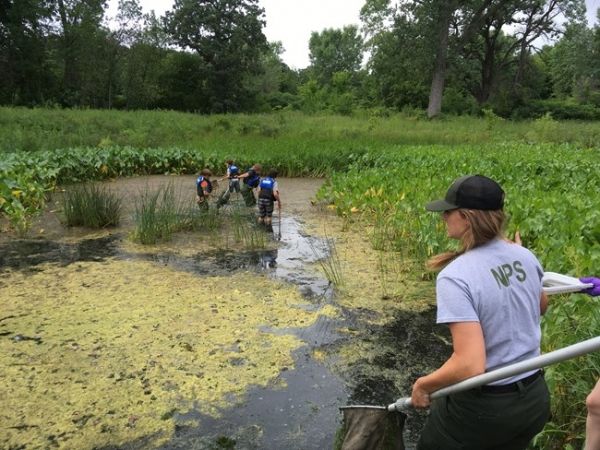The Dragonfly Mercury Project engages citizen scientists such as students and teachers in the collection of juvenile dragonflies, also known as dragonfly larvae, from national parks for mercury analysis.
Mercury is a toxic pollutant that can harm human health and wildlife health. Mercury often enters parks as air pollution from distant, human-caused sources, like coal-burning power plants. Dragonfly larvae are excellent indicators of mercury risk because they can live for years underwater eating insects and even small fish. Once it is deposited, mercury can build up inside the larvae and give scientists insight into the health of the waters in which they live. Using parks as classrooms, this study provides data for natural resource managers to protect human and wildlife health.
Read more at National Park Service
Photo: Young citizen scientists look for dragonfly larvae to submit for mercury analysis at Mississippi National River and Recreation Area in Minnesota. CREDIT: NPS Photo


